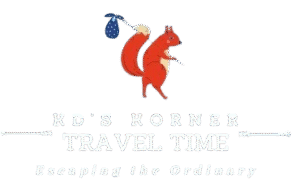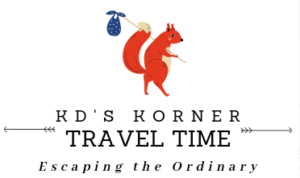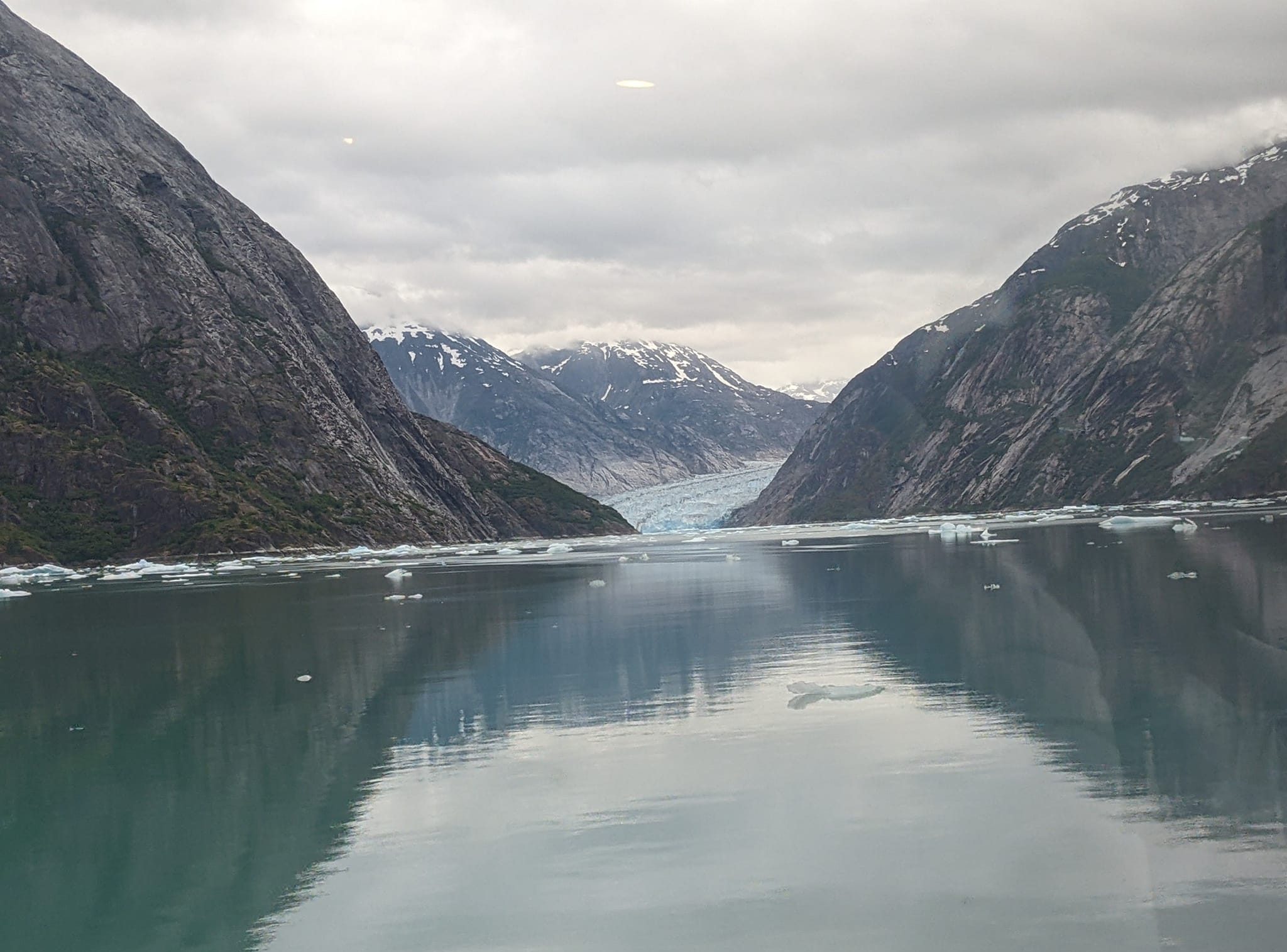On a recent, but short, 4-day trip to Panama City, Panama in August 2019, our main goal was to get a general idea of the area, weather, people, food and just get an overall feel of Panamanian life. As I mentioned in a previous blog about our geo-arbitrage recon trip, we really wanted to learn more about this country. While Panama City was not high on our list of where we think we would like to live, we hoped it would give us a little insight to the country. We were extremely fortunate to have a couple of great Uber drivers and a FANTASTIC city tour guide (read about our 5-hour city tour here) who were more than gracious to share insider information with us. Here is a little bit of what we learned from our informal “interviews” with native Panamanians:
Weather and Natural Disasters:
Hurricanes, flooding, tsunamis, tornadoes and many other natural disasters are extremely rare, if they occur at all, especially in Panama City. The occasional minor earthquake might happen, but they aren’t substantial. Sometimes in underdeveloped areas, more significant damage can be experienced, but a fear of any of these things in and around the city are not a concern for residents.
There are a lot of rainy months (about 2/3s of the year), with October
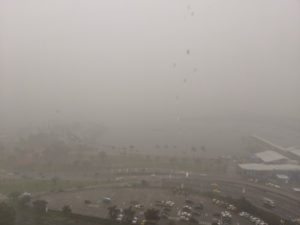
considered to be the wettest month. The winter month of February is generally the driest. Humidity is high, like Florida, which we experienced firsthand, but we both did not feel like it was hot and miserable as Florida can be in August in the few days we were there. The weather temperature ranges from an average minimum of 75º to average high of 85º year round. Uhmm, yes, please!! This is highly desirable by our native Floridian selves who are tired of the FL heat of the long summers we experience.
Hospitals and Health Care:
Hospitals and Health Care:
Health care is free to the public, but there is private health care available as well. On more than one occasion, it was mentioned that the public health care options are not very good due to long waits and mediocre services. The waiting period was mentioned every time this topic was discussed. One story said that hundreds to thousands of people either were made sick or died due to a China company sending “cough medicine” that was actually something like antifreeze fluid for the vehicles. Rumor is China government “offed” the company persons responsible for this error. I have not researched any of this story to verify it since we were mostly more interested in what residents think.
It was mentioned that city hospitals are better quality than areas outside of the larger cities, although there were decent and experienced doctors throughout the country and not to be alarmed if you do not live in the city.
As for private (ie you pay) health care, this was very favorably discussed. Faster service, better care all around. Cost was not discussed, but it sounded like it would be reasonable versus American health care expenses. This is definitely something we would like to research further.
Schools and Education:
One person we spoke with has two school-aged kids in elementary and middle school, I believe he said. He mentioned that the public schools are not very good, so if people can afford it, they send their children to private schools. He talked a bit about how expensive private education is in Panama, so I was slightly concerned. I inquired how much he pays for his children (if he did not mind my asking) and he said it was around $3,000 USD per year per child. While that is not necessarily cheap, considering public education is an option, it is significantly less than many schools in the United States. For example, I did a quick Bing search for private education costs in Florida and it was an average of around $8500 annually and the national U.S. average is a little over $10,000 annually (includes Elementary, Middle and High school levels).
We also discussed colleges. He said that the teachers are underpaid, the education is not very good (example given is English classes have been taught by non-English speaking professors) and there is little money that goes into maintaining the university facilities. It sounded very different than America’s colleges, since ours are constantly in competition with one another to earn people’s attendance and tuition money. There are few options for Panamanians to consider for college opportunities and many of the students are local. They do not have dormitory options like we do. Example is most of U.S’s colleges have complete apartment complexes specifically for students, so people from all over the country and world will attend a university versus just locals. That is not the case in Panama, according to the conversations we had with residents.
Jobs and Salaries:
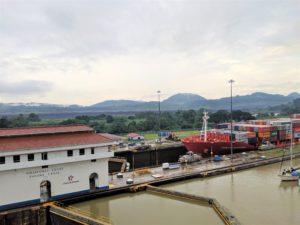
Panama Canal Authority Pilots are very much considered to be premier careers. Highly paid, great benefits, paid vacations and tenure bonuses. However, they can work some very long shifts (up to 15-19 hours sometimes) because when they board a ship to pass through the canal, they must remain on the vessel for the entire passage. The average time it takes a boat to go through can be around 8-10 hours, but it varies by the size of the boat, weather, light, etc. They supposedly work on day or night shifts that vary every month or so, but it can be a very tiring and stressful job, which accounts for their high salaries.
Outside of the Pilots position, other jobs in Panama City are just OK. When we inquired about salaries, it was made clear that they think of their pay more in hourly or monthly pay because it can vary throughout the year. Our driver said that it is not unusual for the average person to only make $700-$800 per month.
It was also mentioned, when asked, that there were benefits given to companies who hired Panamanian residents over foreigners for positions. I am unsure if it is all companies, but one person mentioned that the government will pay a portion of a company’s salaries and wages if they hire those that have Panamanian citizenship. Interesting for sure! I also think this is a great way to encourage people to apply and obtain legal residency.
Currency and Economy:
Panama uses both the PAB and USD for currency, making it really easy for Americans to travel there because there’s no need to exchange the US dollar for PAB. However, when you receive change back from your USD currency, there is a very good chance you will receive PAB change in return. We used this for tips. By the way, we read ahead of the trip that 10% is the going tip rate for restaurant services. We did not ask anyone to confirm this, we just tipped at our normal 20% of the bill rate (American standards). From some of the gratitude that we received from our servers, we assumed that we were being generous. Again, we did not ask anyone what the expectation is for this, so this is just from our observations. If anyone has any additional insight on this, please feel free to share.
When we talked with residents, we found it interesting that they felt like their Panamanian economy boomed during the USA recession in 2008-2009. When they accepted the USD for their currency, they believe their economy was even stronger. They really did not feel like the recession in America affected them.
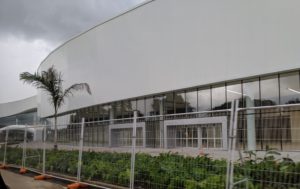
We were driven by an area where a convention center is being constructed and it expected to be open for business within the next two years, although the government had made some decisions to explore vendor exploitation that caused the facility to be pushed back in completion by several years. Interestingly, the plan is to build this ginormous convention center in hopes to make Panama, and Panama City specifically, a huge destination point for events. They expect major hotels and restaurants to follow closely behind the completion of the center. This is something for us, and others considering the area, to keep in mind for the future of Panama City.

Costs of Eating Out:
Because we were only in Panama for four total days (including our flights to and from PTY), we were a little nervous to try all of the food and options Panama City has to offer (you know, fear of getting sick from unfamiliar cuisines). However, we did try some local favorite restaurants, along with some local Panamanian foods – just not too “off the beaten path” for us. We do look forward to exploring the local fares in the future when we can visit for longer periods of time. Regardless, I thought it was important to make note that if you’re going to eat out, the local places are far more reasonably priced than the areas in Casco Viejo (ie touristy areas). Some of the meals, like at Nomada Eatery (edge of Casco Viejo), were in line with what we pay in our home area in the USA, which is north central Florida. We had breakfast and lunch at this cool place and it was around $10/person, plus tip. We had a similarly priced dinner, which is on the low side of the cost scale for dinners, at a local joint called El Trapiche (Via Argentina area). Then we had an expensive dinner at Santa Rita Restaurant in Casco Viejo area that would be considered fine dining in our home area. IF we had explored more local favorite “dives,” street food carts and the roadside food stops, we would have saved A LOT of money eating out. But, like I said, this was not the trip where we immersed ourselves into the total culinary experience. Another time.
Our meals ranged from $20 to $60, varying on which meal and location, but very similar to our area. This isn’t including any fast food (or our stop at Krispy Kreme in Costa Del Este, hehehe).
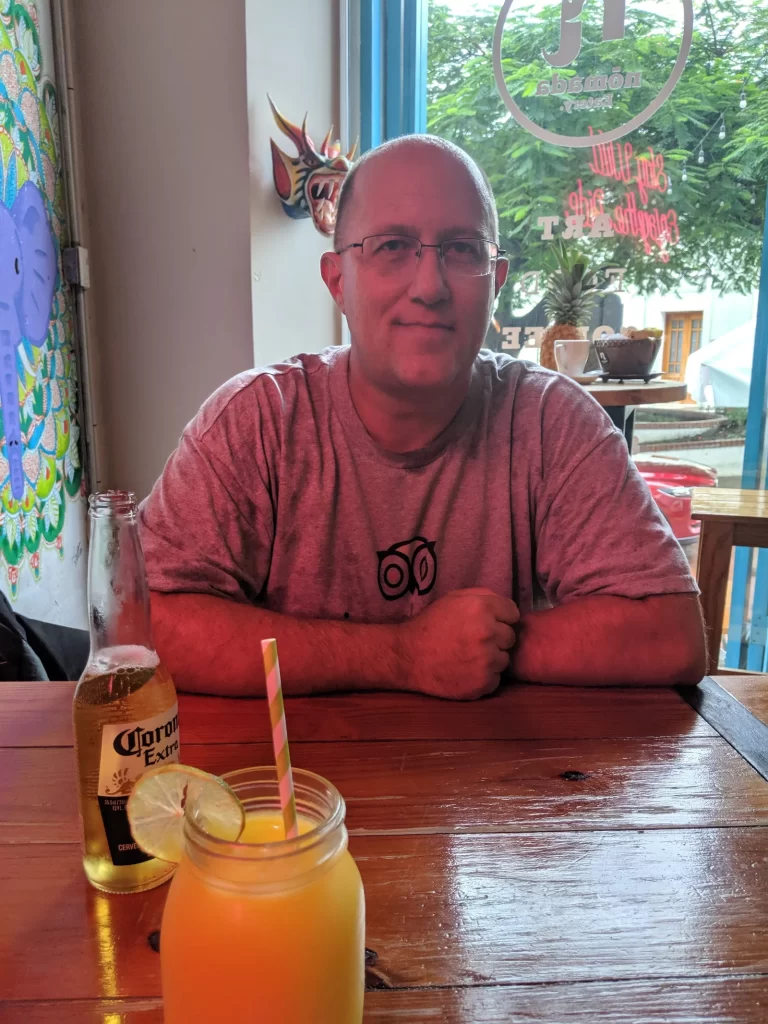
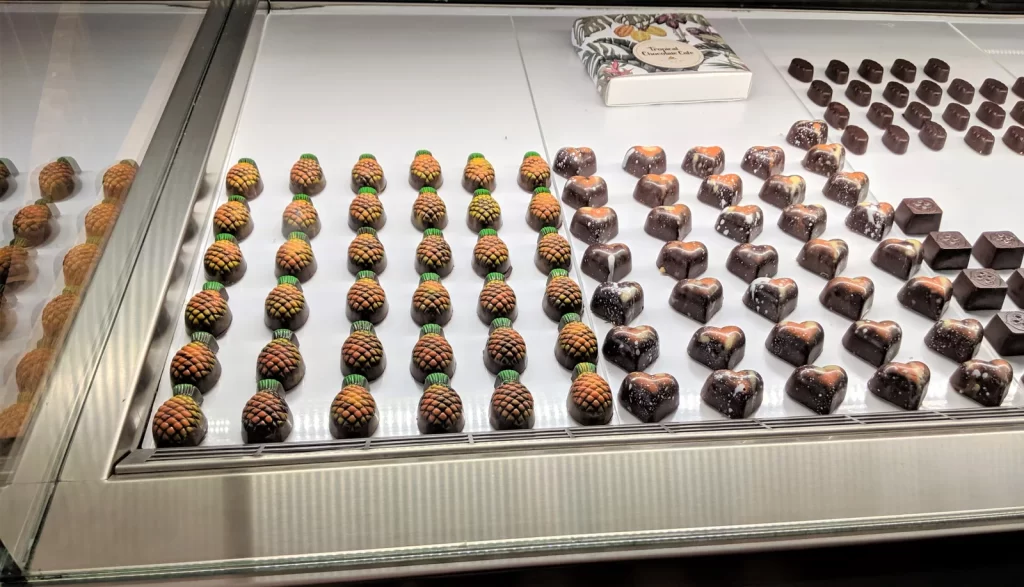
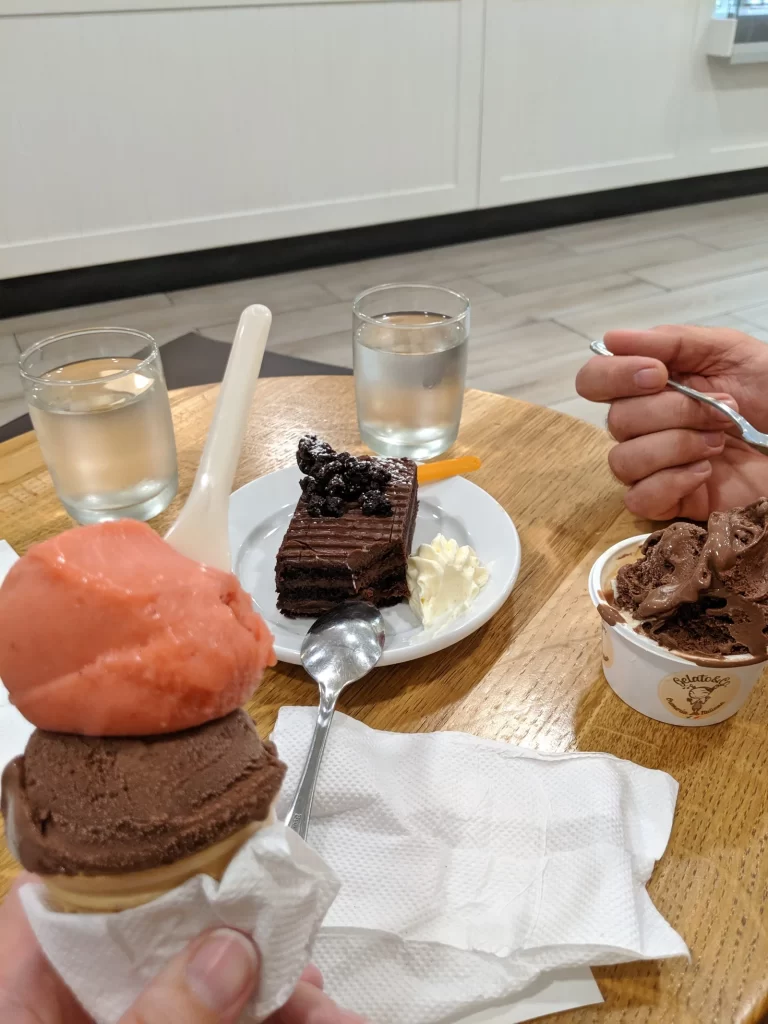
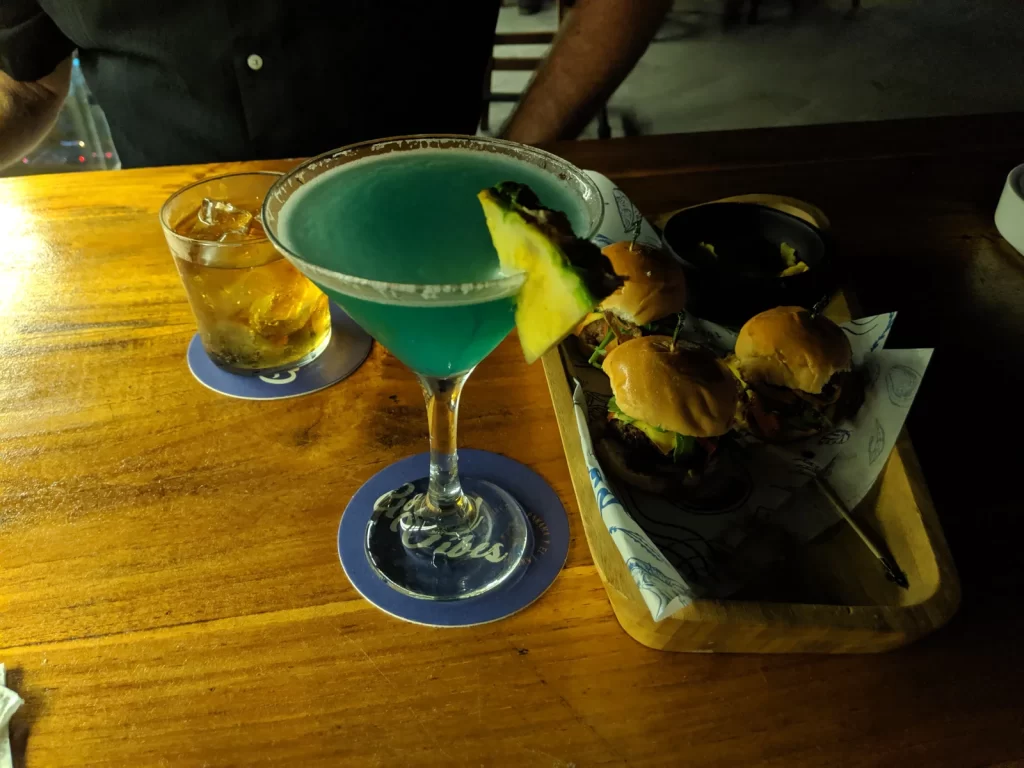
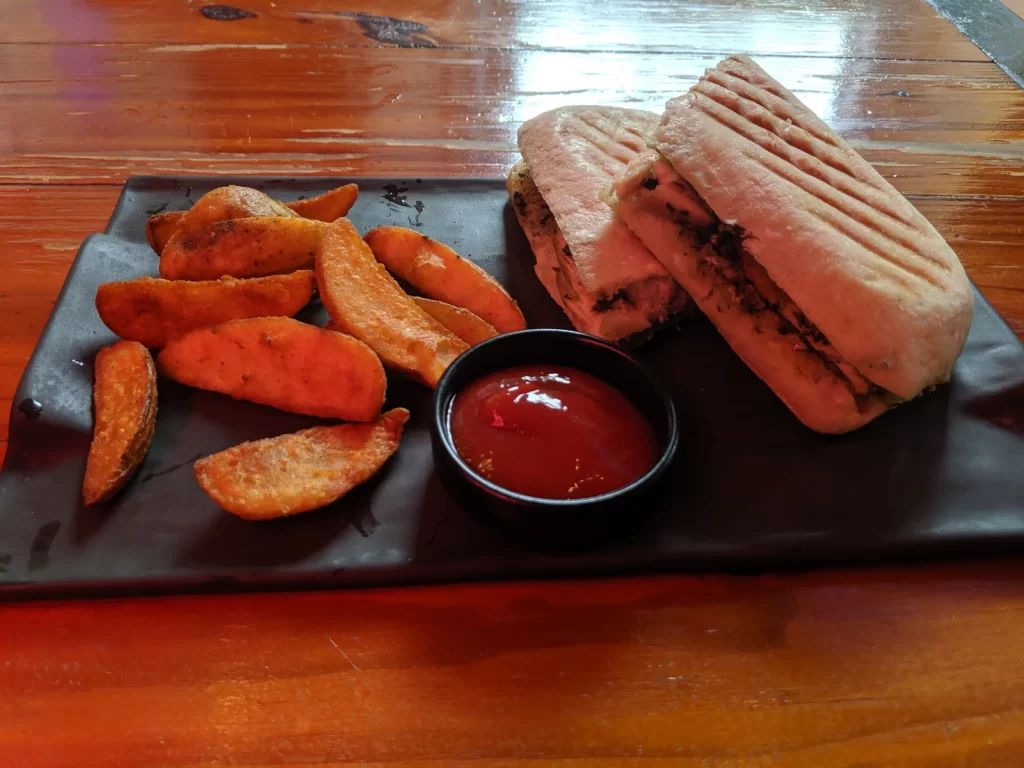

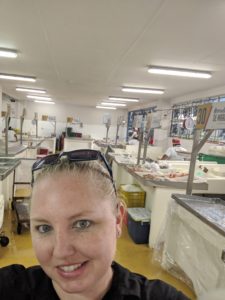
My point here is, if you want to save money and get a better idea of cost of living in regards to eating out, there is a huge difference in where you eat so keep that in mind if you are thinking about moving to the area. There is also A TON of fresh fish and seafood in the area at so many local markets, including at the Mercado de Mariscos in the Casco
Viejo area. Most stores that we went into had options to purchase fresh seafood for reasonable prices to cook at home. (Sadly, my hubby does not like seafood and he is the main cook, LoL.)
Animals:
While we did not discuss wildlife a lot, I was excited to learn that sloths live in Panama! We drove up Ancon Hill near the city and looked for sloths. Unfortunately, it was raining so they were not out moving around. We were told that they roll up into a little ball when they are sleeping or hiding, making it tough to see them. I was disappointed not to see a sloth in the wild, but such is life. I guess we will just have to go back!
White tailed deer are also common in the area. We actually saw some at the Panama Canal, across the way from the Miraflores Locks. We come from a hunting community, so we asked if that was a thing there – and it is not. We were told the government has strong control and restrictions on hunting, even in some of the underdeveloped areas. It is also hard to get a firearms license (or “permissions,” as our guide referred to it several times).
Popular Ex-Patriot Locations:
We inquired about the most popular ex-pat locations in their opinion. The top three were: Boquete, Coronado and Altos del Maria. None of these were super close to Panama City, so we did not make a trip to visit them this time. Plus, we are weary of moving to locations that may be “too” ex-pat like because many of them will become similar to the cost of living we experience in our area of the United States. However, here is what our new found friend said of them:
Boquete is a mountain town and has a lot of coffee plantations
Coronado is a beach resort town that has developed specifically around ex-pats and includes a nice gated community.
Altos Del Maria is somewhat near Coronado, but not considered a beach town. It is closer to Boquete in cost of living and the new-ness of it for ex-pats and has a gated community. This is not considered a popular tourist destination.
Interestingly, on our very last day in Panama City, Panama, we went for a quick bite to eat at New York Bagel Café (yeah, I know, LoL). While we were there, two young guys, probably in their 30’s, sat at a table next to us and were speaking English. Before we left, we stopped by and asked them where they were from and one had just moved from Canada a week prior and was within walking distance to the café. The other one, Jonathan, lived in Pedasi, which is located in the Peninsula about four hours from Panama City. He is a realtor for that area and has lived in Panama for 9 years. He said he really loved it and that the area he lived in is becoming popular for ex-pats, but not to the extent of the aforementioned towns. It is primarily a small fishing community. (If anyone is looking for a realtor in Panama, let me know, I will be happy to share his information with you.)
(P.S. We also accidentally found the statue of Einstein’s head next to NY Bagel Cafe while waiting for our Uber!)

I hope you found some of this information interesting, relevant and helpful to either your research, travel or retirement plans. As I mentioned previously, there is a lot of this information that I have not verified via additional research, but this is what natives think, experience and believe about their city and country, which is often very accurate insights. Have you explored additional areas in Panama? What was your experience like?
